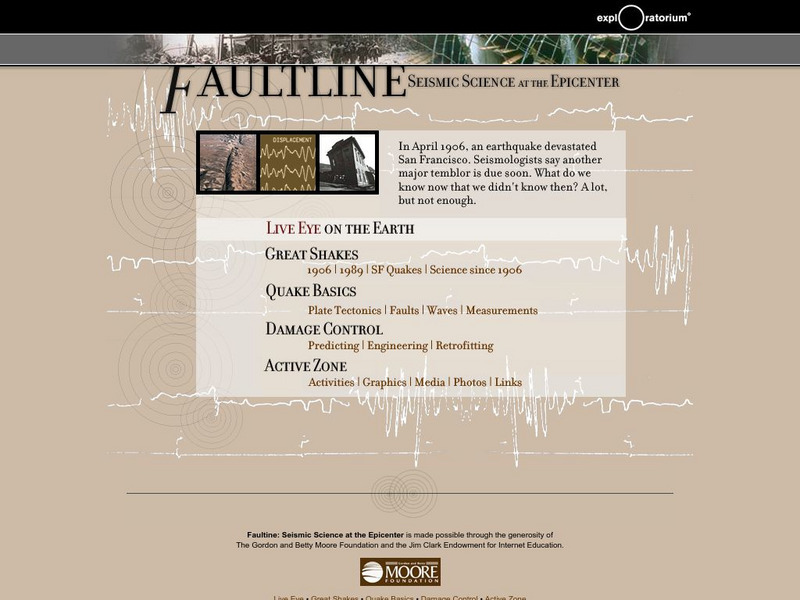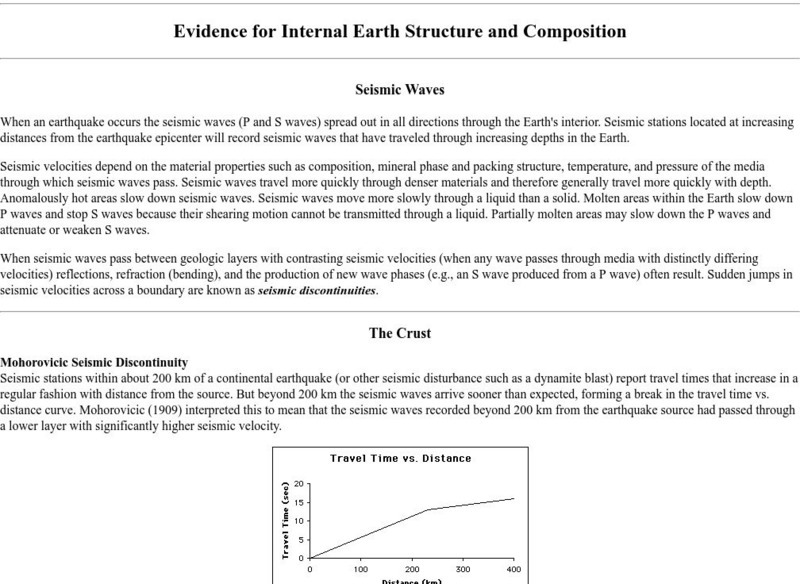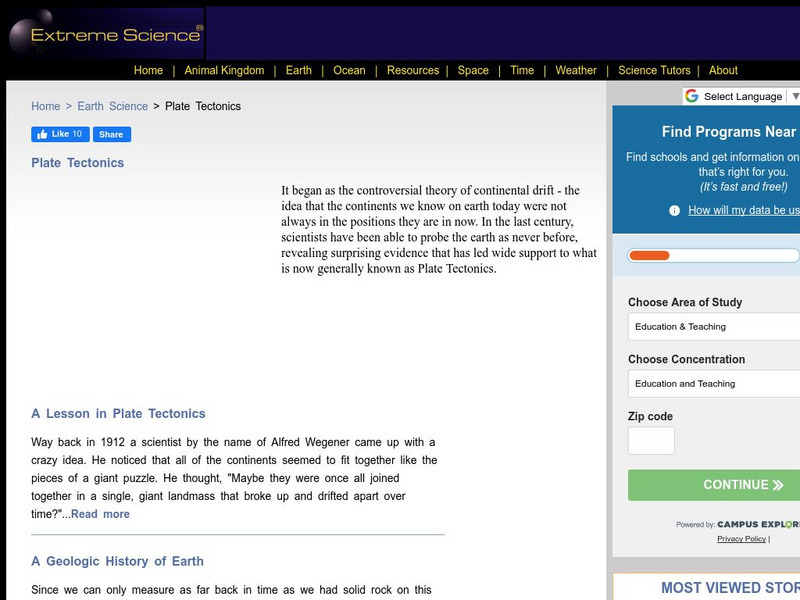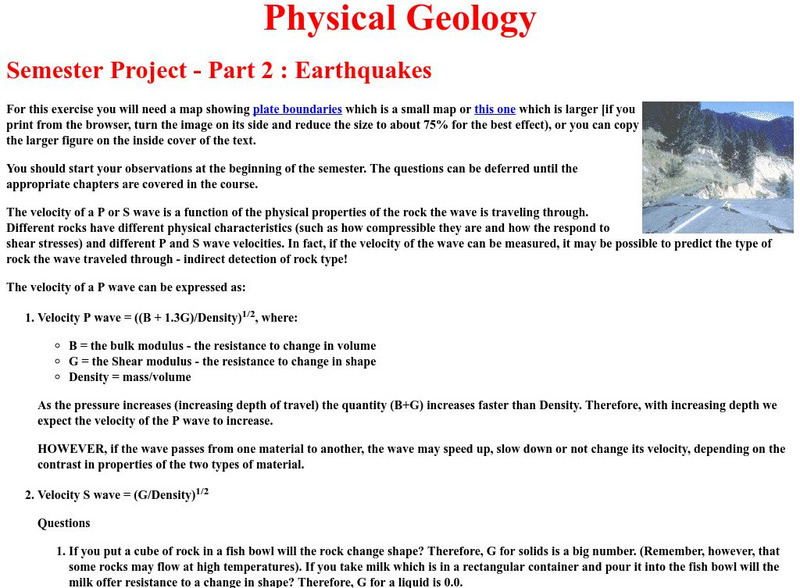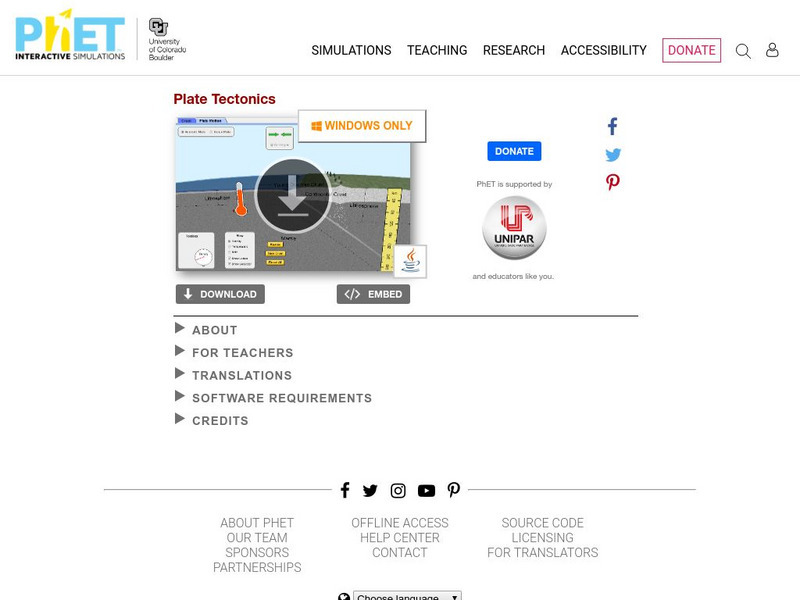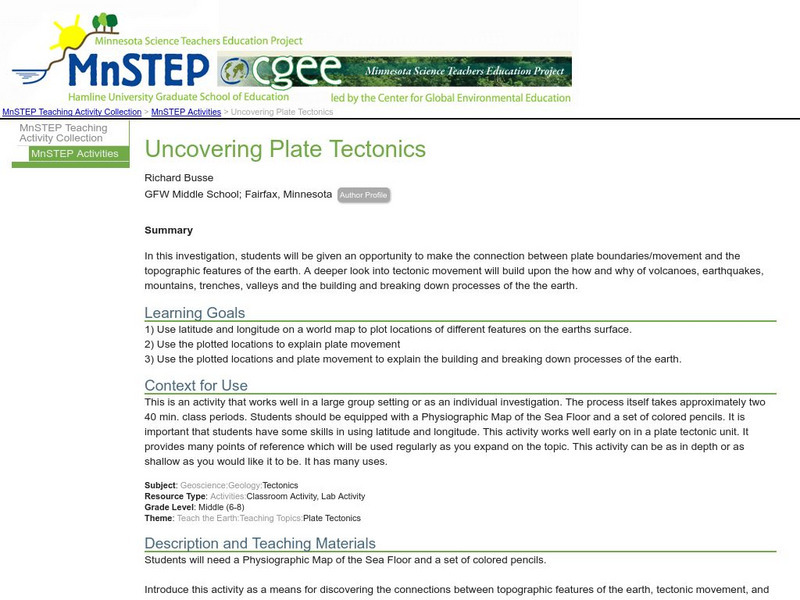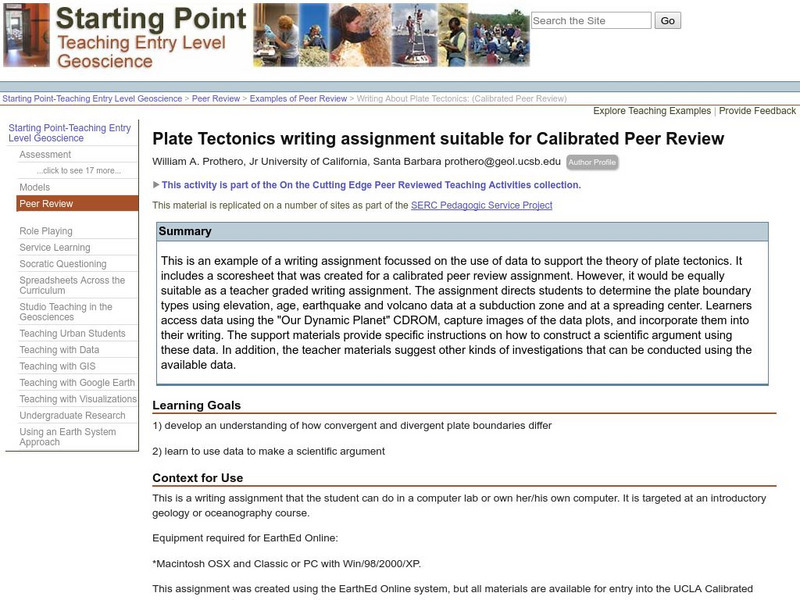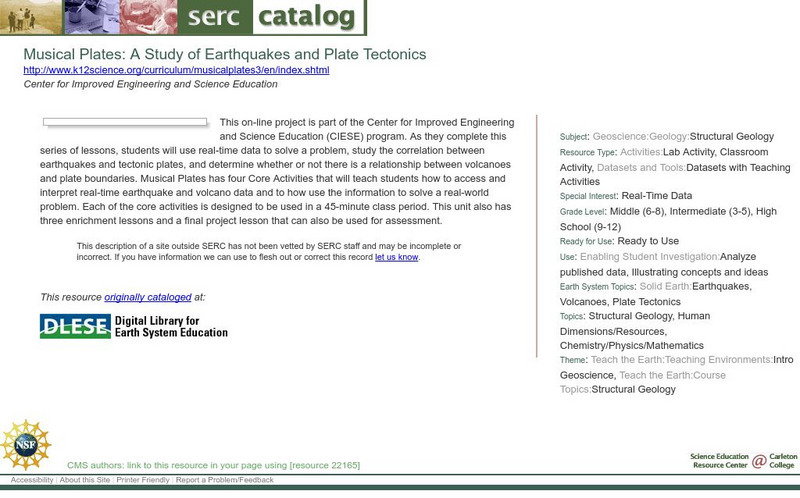Smithsonian Institution
National Museum of Natural History: Global Volcanism Program: This Dynamic Planet
Interactive activity that allows the learner to make their own regional map using layers of their choice such as volcanoes, craters, plate tectonics, or earthquakes. This map of the Earth zooms in and out, highlights essential processes,...
Smithsonian Institution
National Museum of Natural History: This Dynamic Planet
Research and explore past earthquake and volcanic activity on this interactive world map. User can manipulate which notable events and other map characteristics to view depending on the type of study being done.
Khan Academy
Khan Academy: Complexity and the Future
Will our descendants enjoy lives that are richer, more fulfilled, healthier, and in general better than those of today? Or will human societies collapse under the strain of depleted resources, brutal conflicts, and environmental damage?...
Concord Consortium
Concord Consortium: Exploring Earth's Seismicity
This sequence is an introduction to plate tectonics using evidence from topographical maps, earthquake location and depth, and volcano location using the Seismic Explorer model to investigate patterns of earthquake data and to infer the...
Exploratorium
Exploratorium: Faultline
This site includes all things shaky--earthquakes that is. Observe real-time data regarding seismic activity all over the world. Other modules include information about history's great quakes, earthquake basics and how to recover from...
California Institute of Technology
Cal Tech: The Great 1857 Fort Tejon Earthquake
Basic information about the 1857 "Fort Tejon" Earthquake, along with comparison to other quakes, location of the epicenter, and faults involved.
NASA
Nasa: Magnetic Reversals and Moving Continents
This site gives a good overview of magnetic reversals. Discusses continental drift, ocean floor magnetism, and sea-floor spreading.
Columbia University
Columbia University: Evidence for Internal Earth Structure and Composition
College-level research information describes how the movement of Earth's interior causes seismic wave activity.
Extreme Science
Extreme Science: A Lesson in Plate Tectonics
With its clickable map, this site provides text and graphics on spreading boundary, converging boundary, subduction zone, transverse boundaries and faults.
Georgia State University
Georgia State University: Hyper Physics: Fossil Distribution
One of the first lines of evidence suggesting the existence of plate tectonics was the discovery of very similar fossils in rock masses separated by vast distances and by ocean expanses. It suggested that those land areas had in the past...
NOAA
Noaa: Make Your Own Volcano [Pdf]
Learn how different types of volcanoes develop and construct a simple volcano on your own.
PBS
Pbs Learning Media: Tectonic Plate Movement in Alaska
In this video adapted from KUAC-TV and the Geophysical Institute at the University of Alaska, Fairbanks, learn how tectonic plate movement is responsible for building mountains, such as the Wrangell and St. Elias Mountains. 2m 16s
University of Houston
University of Houston: Earthquakes
This exercise will help students understand the plate boundaries of earthquakes.
American Museum of Natural History
American Museum of Natural History: O Logy: What's the Big Idea? Earth
Find an overview of the Earth and some of the approaches scientists take in studying it, in this click-through series of short perspectives on the topic.
Texas Instruments
Texas Instruments: Plate Tectonics
This plate tectonic activity is designed to assess the comprehension of concepts related to the physical processes that shape the Earth's surface.
University of California
Geo Wiki: Unanswered Questions
Although scientists can neither precisely describe nor fully understand the forces that move tectonic plates, most believe that the relatively shallow forces driving the lithospheric plates are coupled with forces originating much deeper...
University of Colorado
University of Colorado: Ph Et Interactive Simulations: Ph Et: Interactive Simulations: Plate Tectonics
Students studying plate tectonics will better understand its concepts with this virtual experiment that tests how plates move on the surface of the earth. Temperature, composition, and thickness of plates can be changed to create new...
Science Education Resource Center at Carleton College
Serc: Uncovering Plate Tectonics
In this investigation, middle schoolers will be given an opportunity to make the connection between plate boundary movement and the topographic features of the earth.
Science Education Resource Center at Carleton College
Serc: Writing to Support the Theory of Plate Tectonics
This lesson helps young scholars use images that depict earthquakes, seafloor ages, topography, and volcanoes, and then make a scientific argument supporting the Theory of Plate Tectonics.
Science Education Resource Center at Carleton College
Serc: Writing About Plate Tectonics
This lesson is a writing assignment focussed on the use of data to support the theory of plate tectonics. It includes a scoresheet that was created for a calibrated peer review assignment. The assignment directs students to determine the...
Science Education Resource Center at Carleton College
Serc: Geo Logic: Continental Drift and Plate Tectonics
Using the skills of a paleontologist, learners are asked to match up lecturers with what day and time they teach, and how many students they have based on clues given from several different perspectives. In the second part of the...
Science Education Resource Center at Carleton College
Serc: A Data Rich Exercise for Discovering Plate Boundary Processes
This article in the Journal of Geoscience Education describes a classroom exercise based on four world maps containing earthquake, volcano, topographical and seafloor age data. Students participate in this exercise by using a "jigsaw"...
Science Education Resource Center at Carleton College
Serc: Aboard Alvin
This Gulf of Maine educational website takes students aboard the submersible Alvin. It includes informational pages such as a project overview, as well as pages about Alvin, hydrothermal vents, and the researchers involved in the...
Science Education Resource Center at Carleton College
Serc: Musical Plates: A Study of Earthquakes and Plate Tectonics
Four part lab activity involves students using real-time data to solve a problem, study the correlation between earthquakes and tectonic plates, and determine whether or not there is a relationship between volcanoes and plate boundaries.





